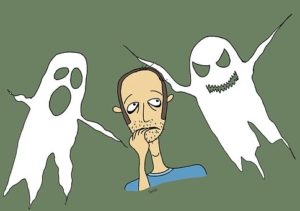Pain
Category : Uncategorized
Pain
Pain is a very interesting area to work with and one that I’ve helped clients to gain control of.
Pain is essentially an electrical signal sent via nerve pathways to your brain. It is the way your brain interprets information about a particular sensation that your body is experiencing. Interestingly there is no such thing as a pain center in your brain, the area’s that are activated when we feel pain are the same area’s that are activated with emotions and attention. The area of the brain is called the anterior cingulate cortex which resembles a “collar” surrounding the frontal part of the corpus callosum in the limbic system of the brain. A lot of people therefor say it is a perception. I know when I’ve hit my thumb with a hammer it bloody hurt!
Doctors can prescribe some powerful medication to help managed the discomfort it can cause. There are other things it can cause too like depression due to being in constant pain, irritability and sleeplessness but to name a few. Painkillers interfere with the pain messages sent to your brain so dull the signal from the nerves to the brain, they don’t cure it but mask it. It is there for a good reason it’s our bodies way of saying something isn’t right or needs out attention, like my thumb!
So how can I help, well studies like the ones below point to good results using hypnosis.
http://www.ncbi.nlm.nih.gov/pmc/articles/PMC2752362/
“The findings indicate that hypnosis interventions consistently produce significant decreases in pain associated with a variety of chronic-pain problems”
Also
“In 2004, researchers at the University of Iowa Roy J. and Lucille A. Carver College of Medicine and the Technical University of Aachen, Germany, tried to identify the exact effect of hypnosis on the brain using functional magnetic resonance imaging (fMRI). fMRI measures blood flow in the brain and can be used to view activity in different regions of the brain in real time. More blood flow indicates more activity. To conduct the experiment, the researchers asked participants to first identify when a hot surface became painful to the touch (an eight on a scale from zero to ten) and used fMRI to determine where the brian sent the pain signal. They then hypnotized the subjects and gave them suggestions aimed at reducing pain while increasing the temperature on the surface to the level previously reported as painful. All subjects reported reduced pain (less than a three on the scale) if they reported any pain at all. Additionally, the fMRI scan revealed a highly reduced amount of activity in the primary sensory cortex as well as the other high-level pain areas of the brain. Activity in the lower levels of the brain were unaffected by hypnosis, implying that the only changes hypnosis produced were in the conscious levels of the brain.”
http://www.science20.com/welcome_my_moon_base/does_hypnosis_work_relieve_pain
Hypnosis helps the client to go into another state of mind in which they can help to control the emotions linked to the pain and attention to that. I think this is one but not the only reasons why it works and this is just my opinion.
For a free consultation contact me on 024 75098634 or click HERE
Regards
Adam


















